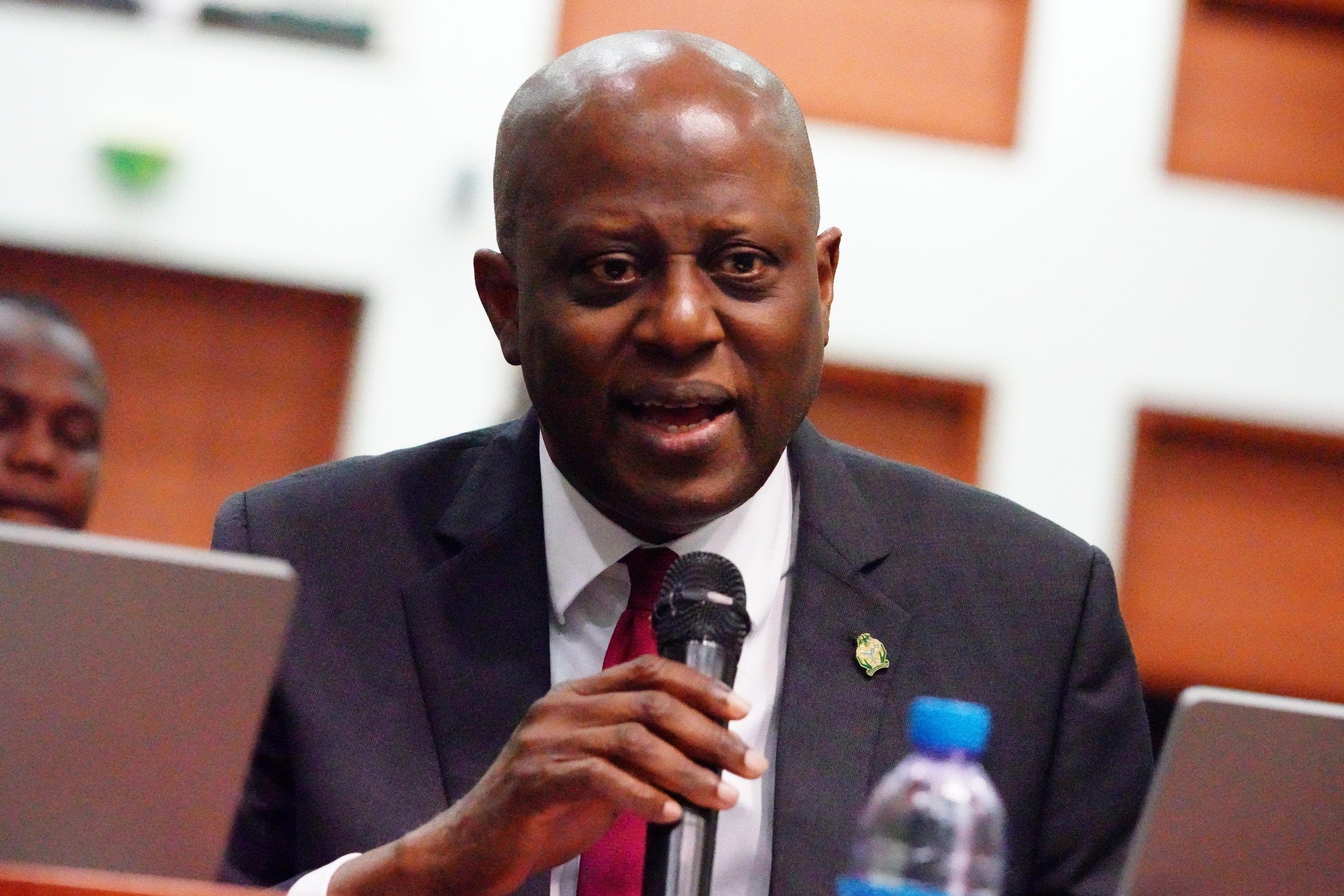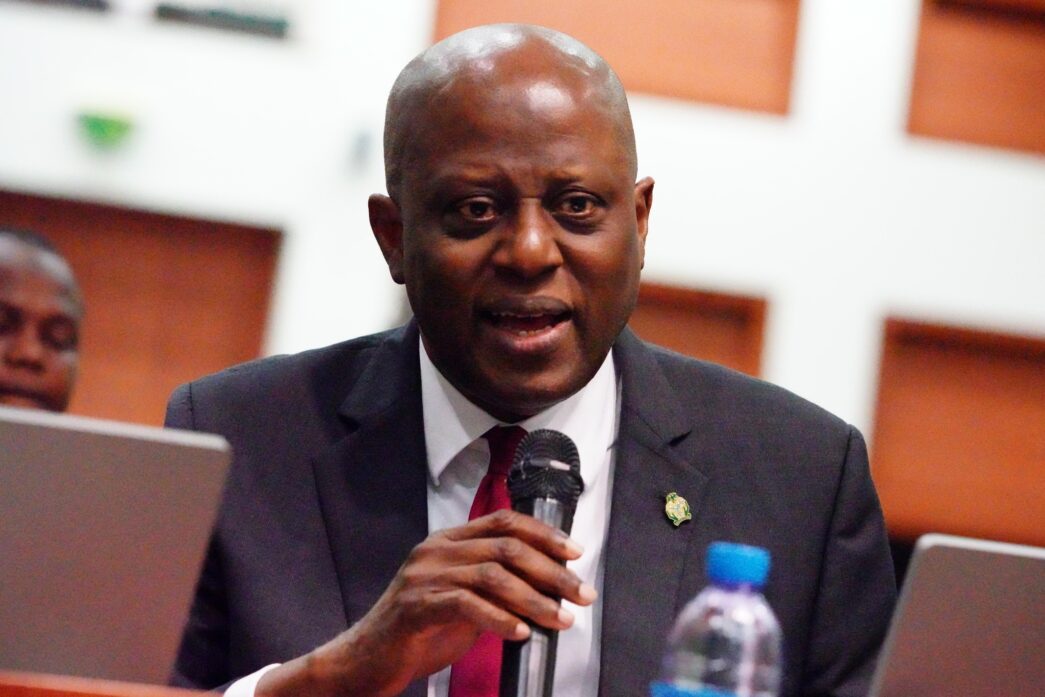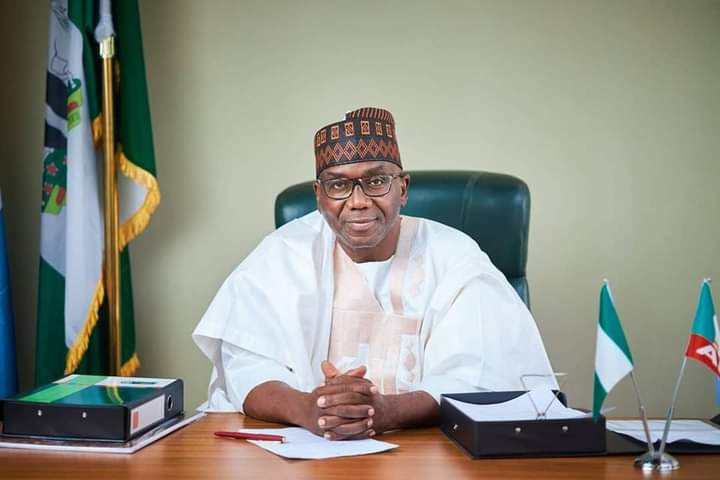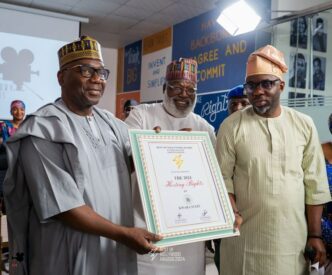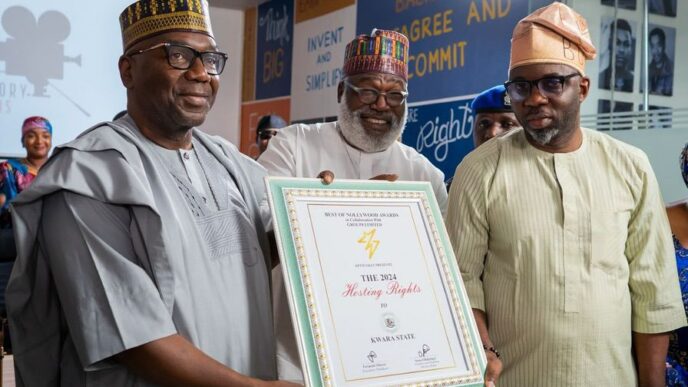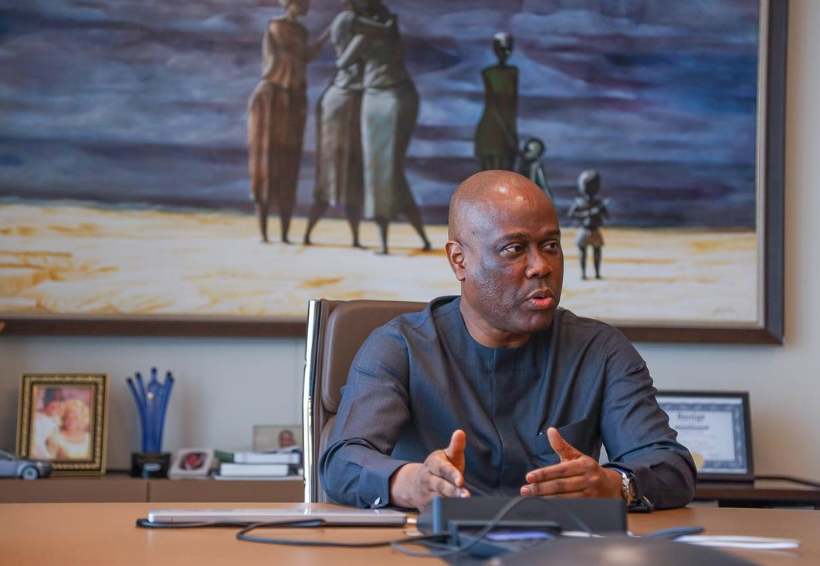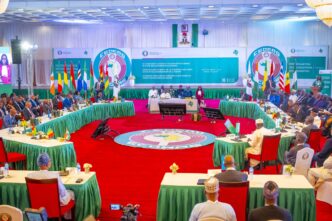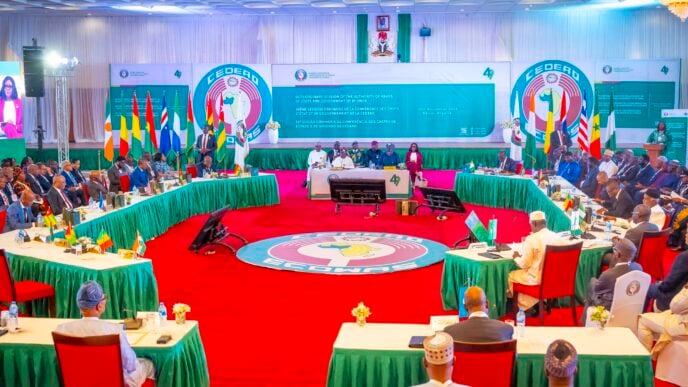BY SIMBO OLORUNFEMI AND ADE ADEFEKO
It is unknown if Olayemi Cardoso ever thought he might one day become the Governor of the Central Bank of Nigeria. It might not have crossed his mind, but his lengthy career in Banking, which saw him rise from the floor to the top as Executive Director, before leaving for public service, only to make a return to Banking as Chairman of one of the top international banks in Nigeria, could not have better prepared him for the office which he assumed about 16 months ago. While his educational attainment, decades of experience, training and level of exposure might have made him a perfect fit for the office, not many men with his pedigree would have been willing to take on the assignment with the enormity of the task at hand.
It was a perfect storm of sorts, with the Nigerian economy experiencing a downward cyclical turn, buffeted by harsh domestic and global realities, made worse by the Russia-Ukraine conflict and the disruptions in global supply chains caused by the Covid-19 pandemic, particularly in agriculture and energy sectors, with pronounced adverse effects and challenges for an import-dependent Nigeria.
Cardoso sums up the situation in his address at the Annual Bankers’ Dinner two months into office as Governor thus, “It is evident that we are facing significant macroeconomic and social challenges. These challenges stem from a variety of factors, including adverse global shocks, unfavourable domestic imbalances, structural rigidities, and the unintended consequences of certain corrective policy measures implemented to restore and realign our macroeconomic landscape”.
Not only was Cardoso in full grasp of the situation at hand, his clarity of vision extended beyond monetary policy management to the restoration of the image of the Central Bank of Nigeria, which he said had been significantly diminished due to “various factors, such as corporate governance failures, diminished institutional autonomy of the Central Bank of Nigeria, a deviation from the core mandate of the Bank, unorthodox use of monetary tools, an inefficient and opaque foreign exchange market that hindered clear access, a foray into fiscal activities under the cover of development finance activities. There was also a lack of clarity in the relationship between fiscal and monetary policies, among other challenges”.
Advertisement
On monetary policy management by the CBN, Cardoso laid out the objectives, which were to achieve “price stability, foster sustainable economic growth, stabilize the exchange rate of the naira, and reduce interest rates to facilitate borrowing and investments in the real sector. To ensure the proper functioning of domestic and foreign currency markets, clear, transparent, and harmonized rules governing market operations are essential. New foreign exchange guidelines and legislation will be developed, and extensive consultations will be conducted with banks and FX market operators before implementing any new requirements”.
Sixteen months into office as the Governor of the Central Bank of Nigeria, how has Olayemi Cardoso fared? Of prime consideration to him, just as it is for most Nigerians is the question of the exchange rate of the Naira. June 15th, 2023, before the appointment of Cardoso, the Central Bank of Nigeria announced what it referred to as “operational changes to the foreign exchange market”, which saw to the abolishment of segmentation, with all segments collapsed into the Investors and Exporters (I&E) window, ushering in a market-led regime aimed at achieving a unified and flexible exchange rate system. As of this month, the Naira has lost about 68% of its value since the implementation of the policy to force a convergence in exchange rate(s).
At the initial stage, especially as the Naira continued to slide, the chief concern was about the fair value of the Naira and how that could be attained. While there is no exact science for the determination of fair value, within months of the implementation of the policy, there was a consensus among analysts that the Naira had become undervalued. Taiwo Oyedele, Chairman of the Presidential Committee on Fiscal Policy and Tax Reforms said in October 2023 that a “fair price” for the US dollar should be between “N650 to N750”. That was in line with the projection by the Bank of America in June 2023, which said: “We now see a USDNGN fair value of 680 per USD (previously 580). However, USDNGN is likely to trade above this level, with year-end 700, and a return to 650-680 in early 2024.” During his ministerial screening in August 2023, the finance minister and coordinating minister of economy, Mr Wale Edun, put Naira’s fair value at N700/$1. Even as the Naira maintained its slide, trading at ₦1,372//$1 at the official market and N878/$1 at the parallel market in January 2024, Mr Cardoso expressed the same sentiment, speaking at the launch of the Nigerian Economic Summit Group (NESG) 2024 Macroeconomic Outlook Report, “that the naira is currently undervalued”. But then, while giving assurance to “expedite genuine price discovery in the near term”, there was no doubt that the main focus was to deliver on “a more balanced and stable exchange rate,”
Advertisement
It is in the attainment of price stability in the FX market that progress has been most visible, in the last few months. This has been attributed by analysts to some of the measures introduced by the CBN Governor. One of the first measures undertaken by Cardoso was to clear the backlog of FX commitments totalling $7.0 billion that had accumulated over the years to help restore market confidence, improve FX liquidity and enhance efficiency in the FX market. The unified multiple exchange rate window, established to enhance efficiency in the FX market, and the electronic FX matching platform, set up to restore transparency, are beginning to yield positive results. Remittances through International Money Transfer Operators (IMTOS) rose by 79.4% in the first three quarters of 2024 to $4.18 billion, compared to $2.33 billion for the same period in 2023. At the 2025 Monetary Policy Forum, the CBN Governor said: “We have seen relative stability in the foreign exchange market, a narrowing exchange rate disparity, and rising external reserves of over $40 billion as of December 2024,” which is the highest level recorded in nearly three years. It is noteworthy that the CBN is building on the gains made from these initiatives with the implementation of the Nigeria FX Code, a framework designed to enhance governance, transparency and compliance in the foreign exchange market.
Beyond monetary policy management by the Central Bank of Nigeria, the bold plans laid out to reform and strengthen the financial system are commendable. Last year, the CBN announced new minimum capital requirements for banks, effective March 2026, moving the minimum capital base for commercial banks (regional licence – N50 billion; national licence N200 billion; and international licence – N500 billion). The essence of the recapitalisation exercise is to imbue the banks with the capacity to respond to possible macroeconomic challenges and headwinds occasioned by external and domestic shocks. This will also place the industry in the proper condition to continue to support the growth of the Nigerian economy in its bid to become a $1 trillion economy by the year 2030.
The Cardoso-led CBN has also launched other initiatives under the National Financial Inclusion Strategy, which are designed to bridge the gender gap in financial access, empowering women through financial services, education, and digital tools, which according to the Governor is to create an enabling environment for inclusive economic development. Other categories of Nigerians are expected to be brought under the banking umbrella through the National Financial Inclusion Strategy. There are also initiatives such as non-resident BVN registration and diaspora-focused financial products introduced to accommodate Nigerians in the diaspora and enhance the country’s global competitiveness.
The sore point remains the high level of inflation, which in Cardoso’s words is a huge challenge, as it “erodes purchasing power, discourages investment, and exacerbates inequality”, which is why the Governor has committed to a disinflation process, which he says, “requires a careful balance of policies that mitigate short-term costs while anchoring long-term stability”. He admits though that the disinflation efforts by the Bank have met some challenges “, including persistent demand and supply-side shocks” He argues that the upward adjustments to the Monetary Policy Rate, which rose by 875 basis points to 27.5% in 2024, is a necessary measure to combat inflation despite the immediate pressures it placed on households and businesses, and that inflationary pressures were beginning to ease, and that signs of a downward trajectory are anticipated in 2025.
Advertisement
There is no doubt, however, that on the watch of Olayemi Cardoso as the Governor of the Central Bank of Nigeria, there is clarity of vision on how to achieve a turnaround in the economy, which is beginning to yield fruits; while returning the Bank to the path of fidelity to its core mandate and restoration of its institutional autonomy. We can only wish the HeadMaster well as he works to restore the Central Bank of Nigeria to its role as a trusted banker of last resort, ensuring price stability and financial system sustainability, while delivering on its catalytic role in achieving economic stability and growth.
Olorunfemi is a Communications Consultant and Managing Editor of Africa Enterprise, while Adefeko is Director Corporate and Regulatory Affairs Olam Agri, Chairman, Industrial Group, Lagos Chamber of Commerce and Industry (LCCI) and Honorary Consul of Botswana in Lagos.
Advertisement
Views expressed by contributors are strictly personal and not of TheCable.
Add a comment
